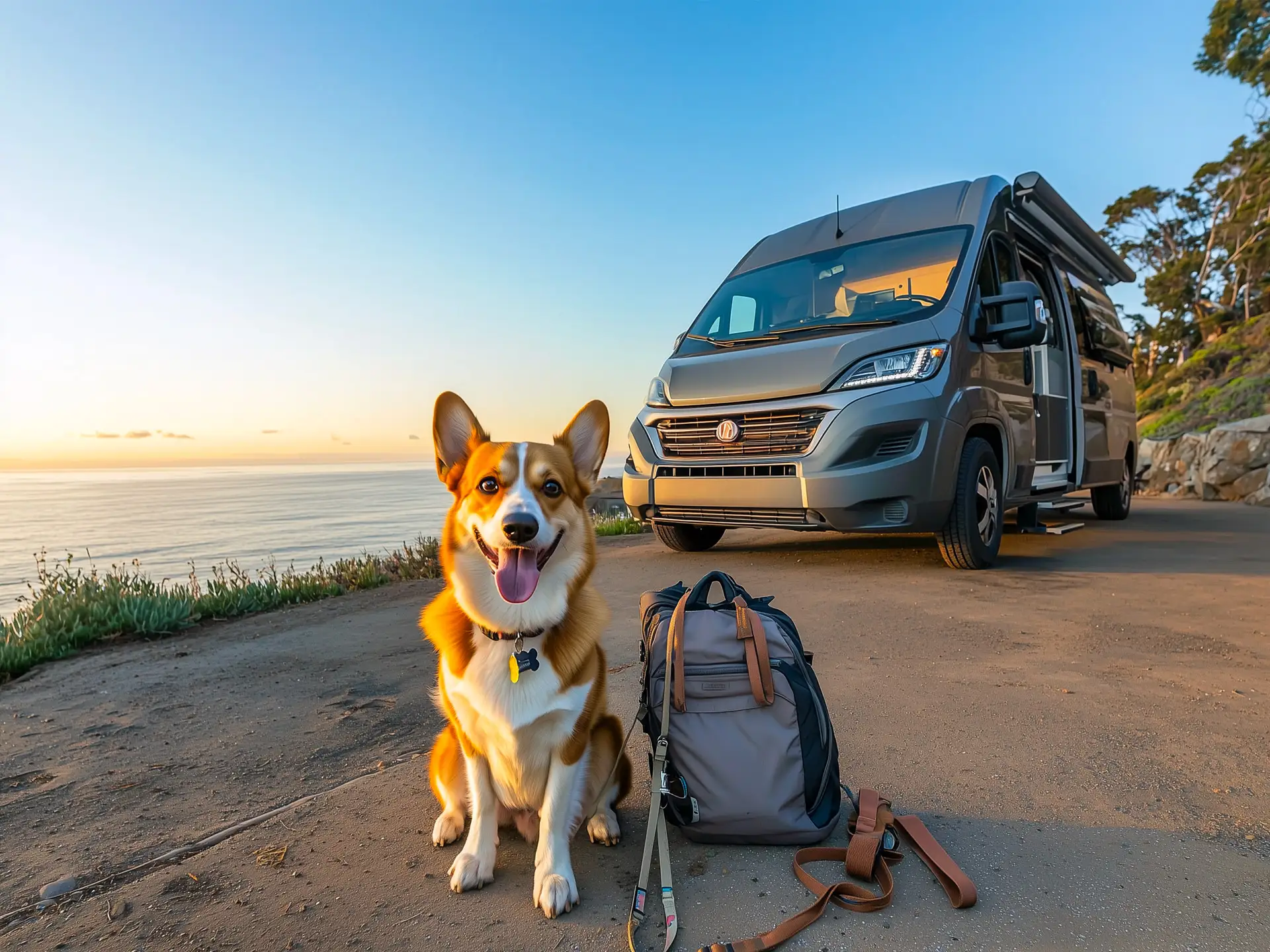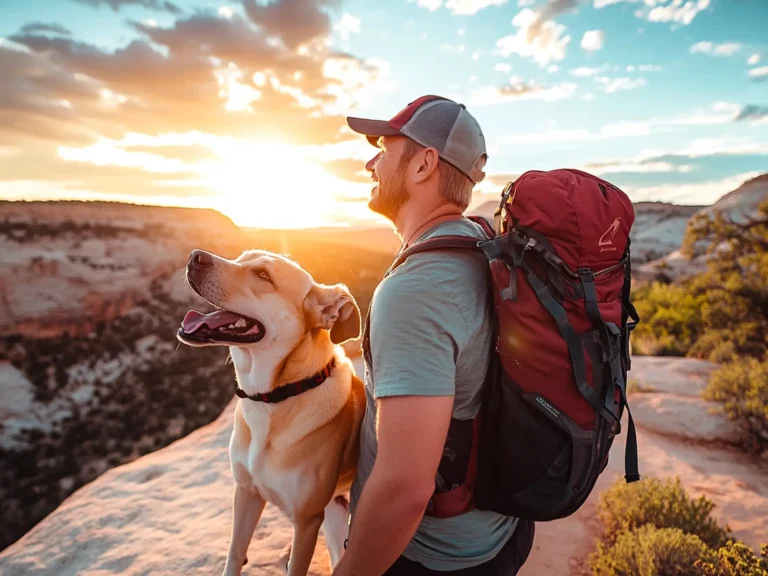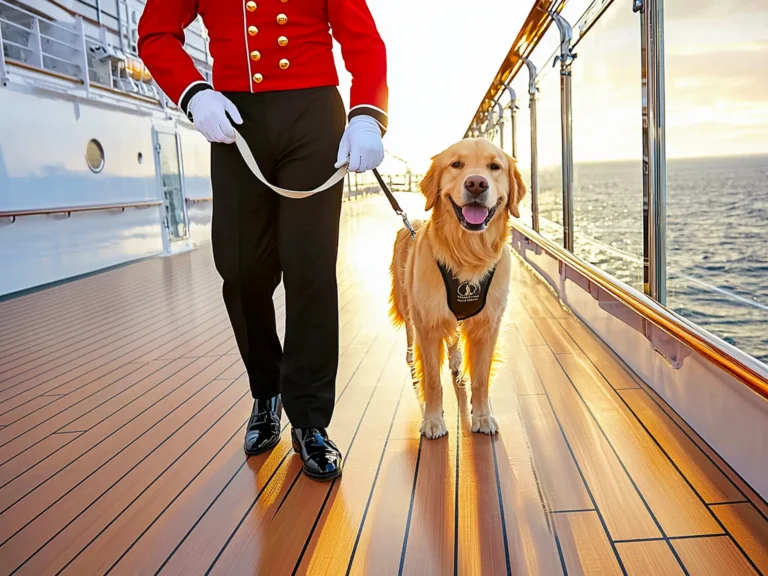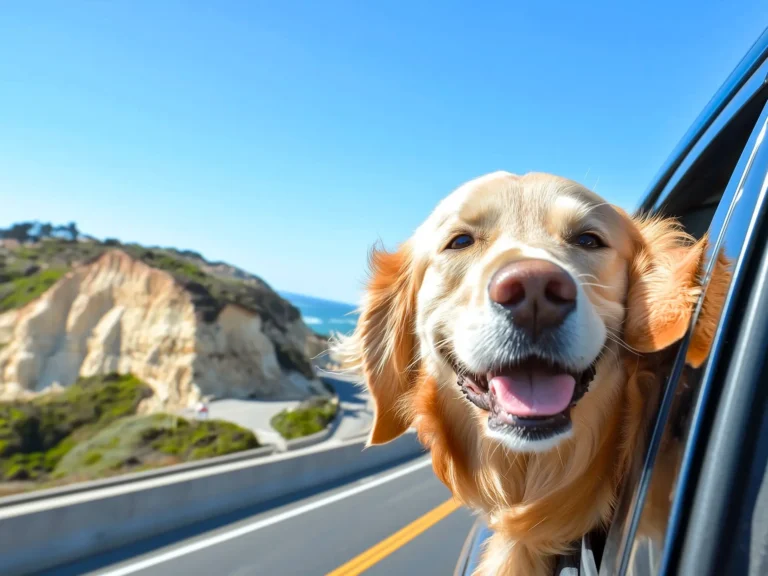Dog friendly holidays aren’t just a passing trend. They’ve gone fully mainstream. These days, if your pup isn’t tagging along on vacation, are you even really living? With over 70 percent of U.S. households owning a pet and 78 percent of pet owners traveling with them, the travel industry has caught on. Dog friendly hotels, airlines, and even tour companies are now catering to the canine crowd.
Whether you’re dreaming of sandy paws on the beach, sniff filled hikes through the mountains, or remote work from a pet friendly resort with your dog curled up at your feet, this guide has you covered. Inside, you’ll find planning tips, top destinations, accommodation picks, and answers to the questions every dog parent Googles before a dog-friendly trip. Time to pack the leash, the treats, and maybe a matching sunhat.
Why Dog Friendly Travel Is Booming
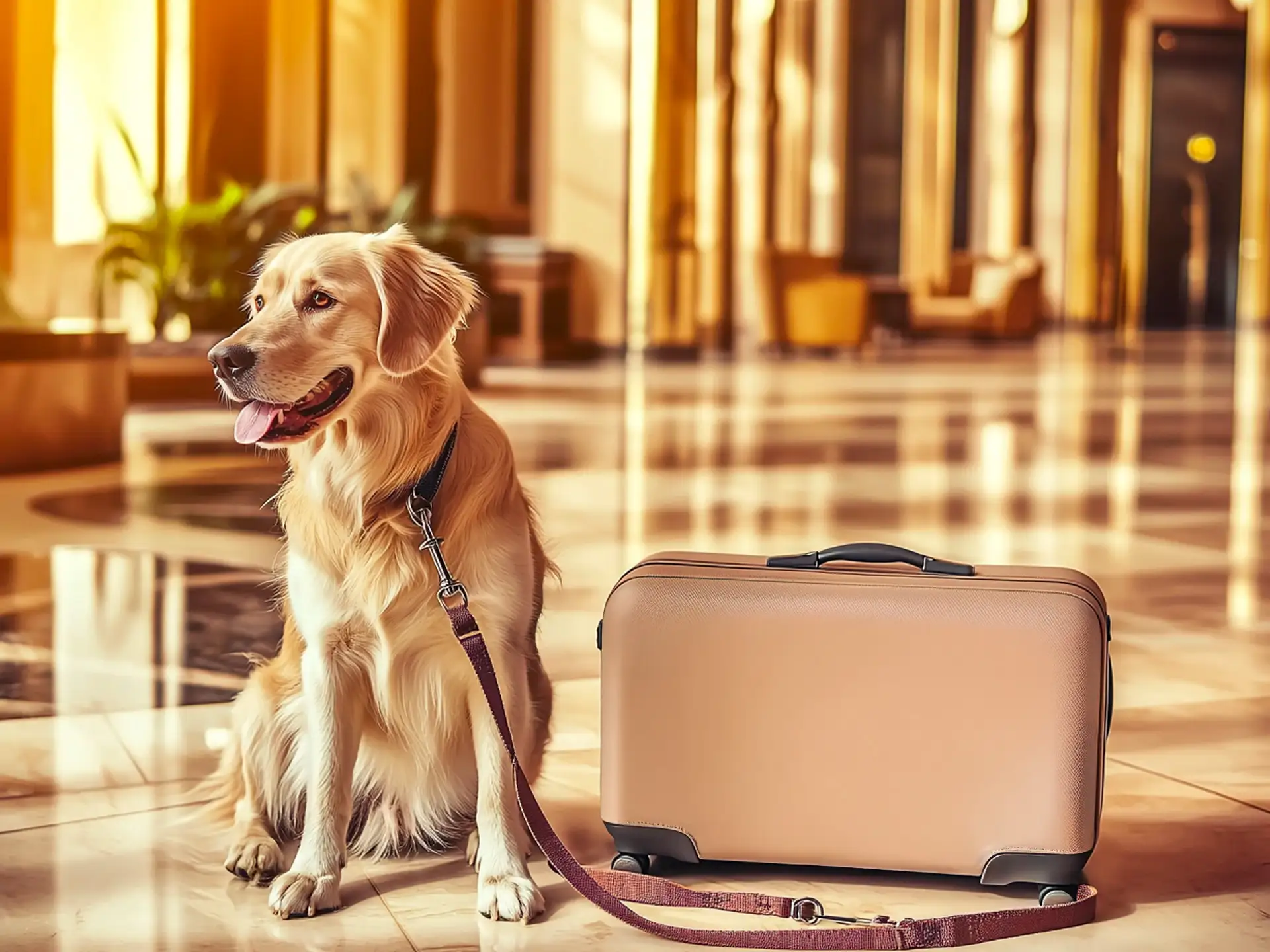
The Pet Travel Industry Is Exploding
Pet friendly holidays are no longer a niche. According to Grand View Research, the global pet travel services market is projected to reach 3.7 billion US dollars by 2030, growing nearly 10 percent per year. From luxury resorts to van life, travel with dogs is becoming the new normal.
What’s driving the boom? A mix of remote work, millennial pet obsession, and the rise of dog-first lifestyles. More people now plan trips around their pets than around people.
📊 Key Stats
- 83% of pet owners have changed travel plans to accommodate their pet
- 75% would pay more for a pet-friendly hotel
- 26% would rather travel with their pet than with their child
- 66% of U.S. pet owners say they would bring their pet on every trip, if they could (Upgraded Points)
- 75% of pet owners want more pet-friendly destinations
- 58% wish they could fly with their pets more often
(Harris Poll) - 75% of U.S. hotels across luxury, midscale, and economy tiers now allow pets
(AHLA) - In the past year, 88% of dog owners traveled by car with their pet and 68% flew with them
(APPA)
The numbers don’t lie. Dog friendly travel is big business, and it’s only getting bigger.
Dog-Friendly Travel Trends in 2025
The dog travel boom isn’t slowing down—it’s evolving. In 2025, new trends are reshaping the way pet parents plan vacations with their pups.
| Trend | Why It Matters |
|---|---|
| Split annual leave includes “pawternity leave” | Companies are increasingly offering paid leave for new pet owners or pet emergencies, helping families take longer pet-inclusive vacations without using traditional PTO. (source) |
| Pet travel market hitting $2.25 B in 2025 | Demand continues to surge. By 2025, the global pet travel services market is forecast to reach $2.25 billion with 10% year-on-year growth. (source) |
| 60%+ of pet owners vacation with pets; 30% go camping or RV-ing | A Chewy survey shows that over 60% of pet owners travel with their animals, and 30% choose camping or RV trips as their preferred format for dog-inclusive vacations. (source) |
| Caters to booming pet travel demand: ferries & yachts innovate | In 2025, ferries like Australia’s Spirit of Tasmania will offer dog-friendly cabins and climate-controlled kennels, while luxury yachts now include upscale pet features (Astroturf pads, onboard bathing platforms, etc.). (source) |
| Over 78% of U.S. pet owners travel with pets annually | According to Dogster and APPA, around 78% of U.S. pet owners take at least one trip per year with their pets, and more than half choose destinations or accommodations based on pet-friendliness. (source) |
Hotels, Rentals and Resorts Roll Out the Red Carpet
Forget “no dogs allowed” signs. These days, it’s all about pup perks and pet concierge services. Think welcome baskets, memory foam dog beds, fenced play areas, in-room dining menus, and even dog yoga sessions.
Platforms like Airbnb and VRBO have embraced the movement, with new filters and labels for listings that include:
- Enclosed yards
- Doggy doors
- Walking or sitting services
- Proximity to dog parks or beaches
Luxury hotels are going all in with spa treatments, aromatherapy, and gourmet pet menus. Meanwhile, eco-resorts are promoting sustainable, dog friendly glamping retreats complete with biodegradable waste bags and compostable bowls.
The Rise of “Workcations” with Dogs
Remote work changed everything. Pet parents are now booking longer trips, sometimes a month or more, to dog friendly destinations where they can balance Zoom calls and zoomies.
- Co-working hotels with dog daycare are on the rise
- Extended stay Airbnbs with fenced outdoor space are in demand
- Fast Wi-Fi and dog friendly cafés are a must-have filter for digital nomads with dogs
“Many Millennials and Gen Z refuse to travel without their pets, who they see as true family members.”
Some are even taking “pawternity leave” to prioritize travel time with their dog.
Air Travel Goes to the Dogs
Flying with dogs has come a long way. Traditional airlines are expanding in-cabin pet options, and in 2024, something truly new took off.
BARK Air launched as the world’s first airline designed entirely for dogs, offering larger seating areas, pet treats, and a calming flight experience tailored to anxious pups.
That said, rules are tightening. As of August 1, 2024, the CDC requires all dogs entering the United States to have official rabies vaccination documentation and meet updated entry requirements. Always check current import regulations before traveling internationally with your dog.
Travel Tech, Perks and Pet Subscriptions
The modern pet traveler is wired, well-equipped, and often subscribed to convenience.
- Apps like DogPack App, BringFido and AllTrails help locate dog friendly parks, hotels, restaurants, and hiking trails
- GPS collars and pet cams provide peace of mind during solo adventures or crate time
- AI powered health trackers and virtual vets are making travel safer and smarter
- Travel subscription boxes offer toys, calming treats, collapsible bowls, and gear tailored to your destination
- Airlines and hotel chains are now launching pet loyalty programs with early boarding, pet fee waivers, and bonus perks for dog parents
Modern dog friendly holidays are a blend of luxury, logistics, and love.
Pro Tip
Before you hit “book now,” double check local leash laws, pet fees, off-leash zones, and emergency vet access. A little prep goes a long way in avoiding surprises and making your trip smoother for both you and your co-pilot.
How to Plan the Perfect Dog-Friendly Holiday (Checklist & Pro Tips)
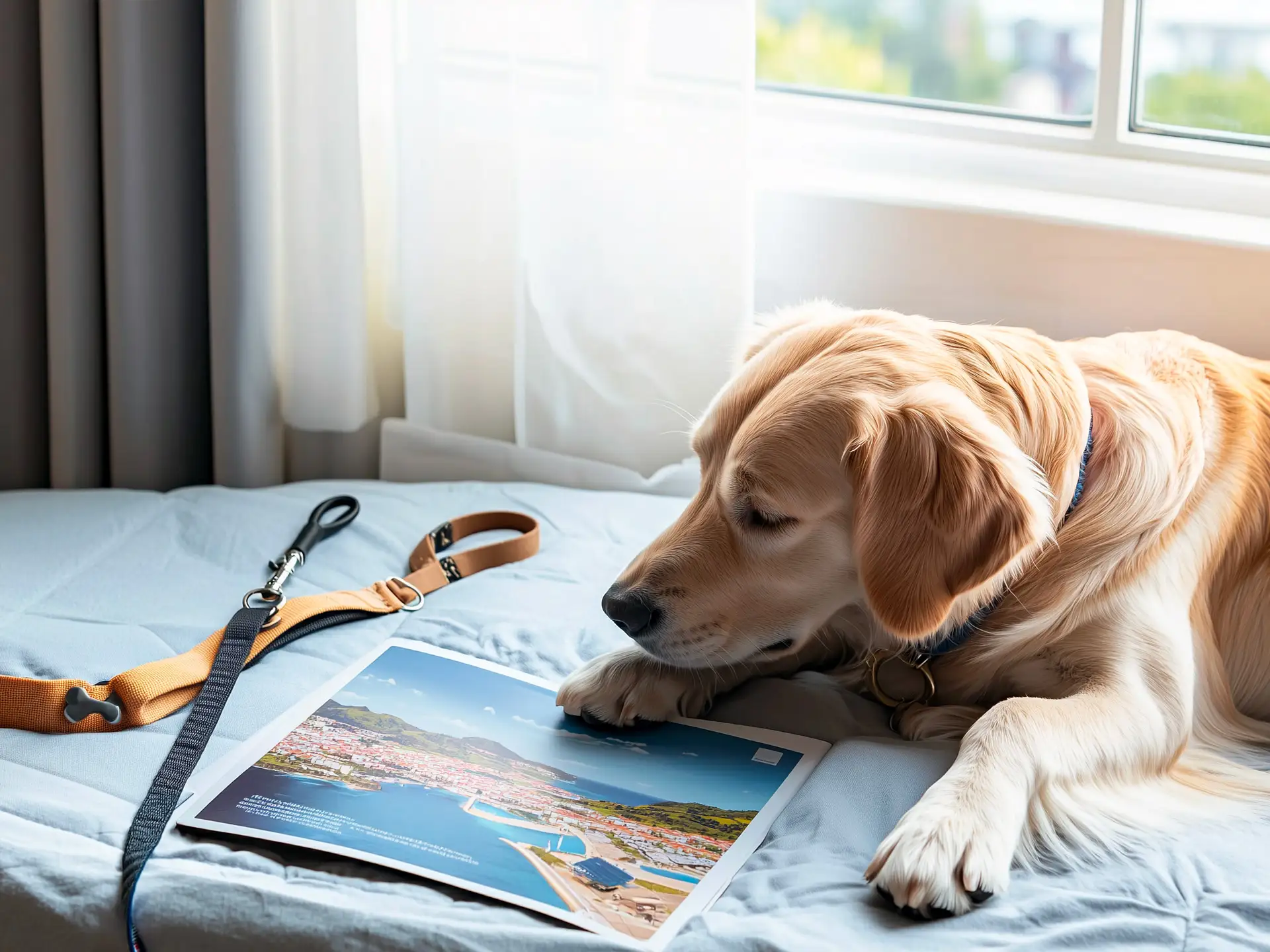
Whether you’re looking for a beach escape or exploring the mountains, dog friendly holidays provide the perfect opportunity to bond with your pet while enjoying new adventures together.
Proper planning is the difference between a relaxing vacation and a stressful ordeal. Here’s how to get started:
Understand legal requirements
Domestic travel. Within most countries, you typically need proof of vaccination (especially rabies) and a clean bill of health from your vet. Some provinces and states have breed‑specific legislation or leash laws, so review local regulations in advance.
International travel. Cross‑border trips require more preparation. Many countries insist on ISO‑standard microchips, specific vaccines administered within a particular time frame and official veterinary health certificates. The EU’s pet passport scheme simplifies travel within member countries, but the UK, Ireland and other nations have unique rules. Always check government websites or consult a pet travel agent at least six months before departure.
Pack with purpose
A detailed packing list ensures your dog has everything needed for safety and comfort:
- Food & treats: Bring familiar food to avoid stomach upset, plus a few favourite treats. Pre‑portion meals to save space.
- Water & bowls: Carry a reusable water bottle and collapsible bowl to keep your dog hydrated.
- Leashes & harnesses: Bring a standard leash and a hands‑free leash for running or hiking. Use a harness that attaches to car seat belts.
- Bedding & comfort items: Familiar blankets or beds help dogs relax in new environments.
- First‑aid kit: Include antiseptic wipes, bandages, tweezers, antihistamines, tick removers and any prescription medication.
- Weather gear: Pack coats, sweaters, cooling vests or booties depending on the climate.
- Waste bags & cleaning supplies: Always clean up after your pet and bring grooming wipes for muddy paws.
- Documentation: Carry vaccination records, microchip details and your veterinarian’s contact information both digitally and on paper.
Travel safety: don’t cut corners
During car trips, never let your dog ride on your lap or roam freely. According to travel safety experts, unrestrained pets pose a distraction and can become projectiles in a crash. Choose from:
- Harnesses and seat belts. These attach to the vehicle’s seat‑belt system. They’re ideal for medium and large dogs and prevent excessive movement.
- Car seats. Booster seats elevate small dogs for a better view and secure them using the car’s seat belt.
- Crates and carriers. Crates provide enclosed safety, reduce anxiety and can be secured with a seat belt or anchored in cargo areas.
- Barriers. Useful for large breeds, barriers keep dogs out of the front seat, reducing driver distraction.
When choosing a restraint, consider your dog’s size, behaviour and temperament. Crash‑tested products certified by independent organisations like the Center for Pet Safety offer peace of mind. Install the gear according to manufacturer instructions, ensure a snug fit and position your dog in the back seat. For air travel, measure your dog and carrier carefully—airlines have strict size limits. Get your pet used to the crate well before departure to reduce stress.
Keep your dog healthy and stress‑free
- Train gradually. If your dog is new to travel, start with short drives and brief stays in hotels or campgrounds.
- Maintain routine. Stick to familiar feeding times and exercise schedules to reduce anxiety.
- Hydrate & cool down. Dogs overheat quickly. Always carry water and avoid mid‑day hikes in summer.
- Microchip & ID. Keep your dog’s microchip information up to date and use an ID tag with a current phone number.
- Emergency planning. Compile a list of veterinary clinics along your route, and save them offline in case of poor mobile coverage. Some travellers carry a copy of a pet advance‑care directive in case of emergencies.
According to Dr. Alex of The Net Vet, “flat‑faced breeds … are especially prone to overheating … plan to stop every 60 to 90 minutes … offer water and allow time to cool off.” (The Scottish Sun)
Selecting the Right Mode of Transportation
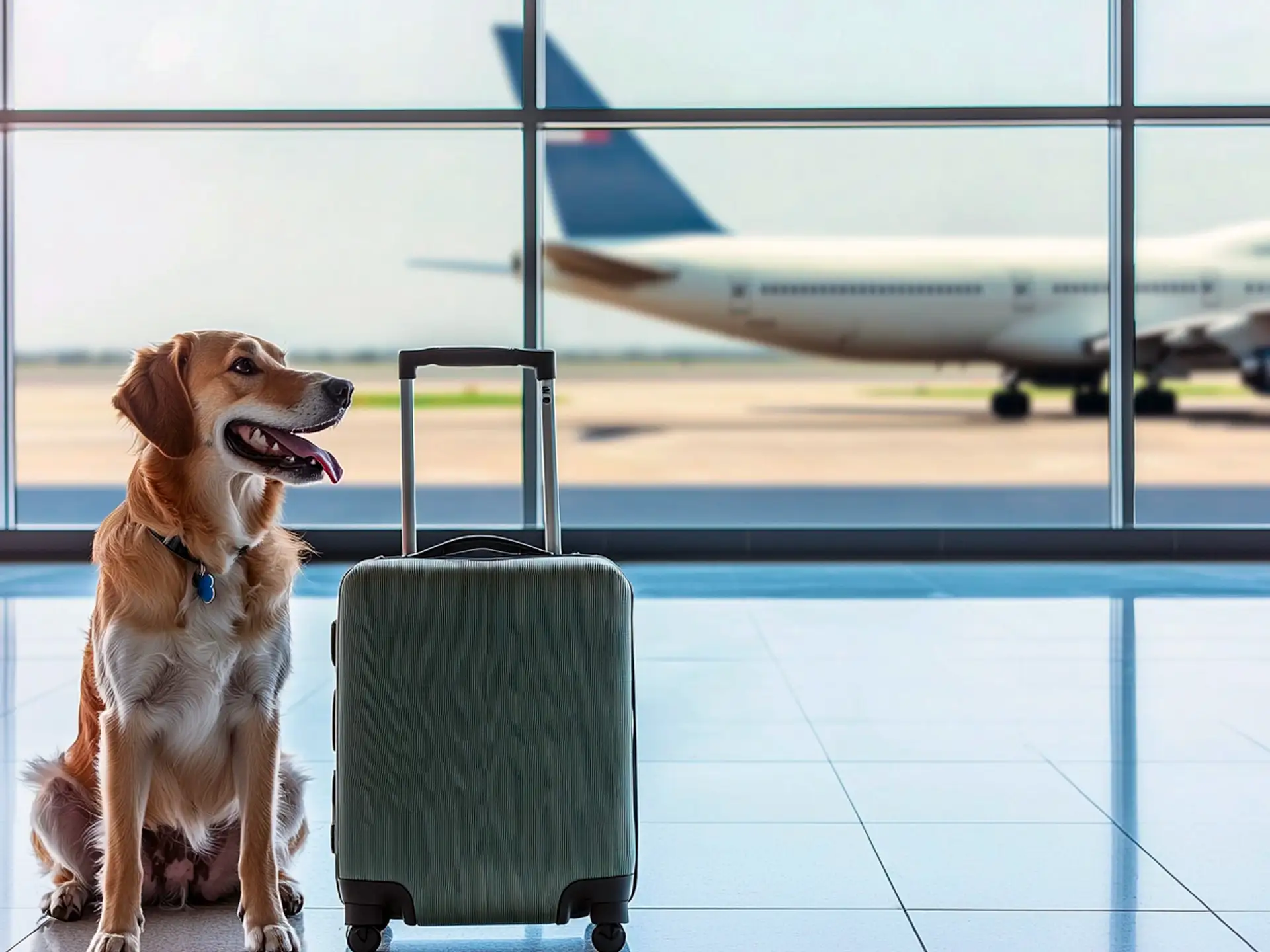
Not sure which travel method suits your dog best? Here’s a quick comparison to help you choose the safest and most comfortable option:
📊 Comparison Table Content
| Transport Method | Best For | Key Requirements | Pros | Cons |
|---|---|---|---|---|
| Road Trips | Medium to large dogs, anxious pets | Harness, crate, or car seat | Flexible stops, lower stress | Risk of heatstroke in parked cars |
| Flying (In-Cabin) | Small dogs under 20 lbs | Airline-approved carrier, vet check | Fast, convenient for long distances | Size/weight limits, limited space |
| Flying (Cargo) | Larger dogs used to crates | Crate + documentation, early booking | Long-distance access, climate control on some airlines | Stressful, limited monitoring |
| Trains | Small-medium dogs in carriers | Check carrier size, some allow leashed dogs | Affordable, scenic routes | Limited routes, mixed pet policies |
| Boats / Ferries | Calm dogs, short routes | Leash or kennel, may need to stay on deck | Outdoor-friendly, pet-friendly routes exist | Unpredictable rules, motion sickness risk |
Road trips
Driving gives you the most flexibility. You control rest stops, pack everything you need and avoid airline restrictions. Use rest areas or dog parks for exercise breaks. Never leave your dog alone in a parked car—temperatures can rise rapidly, leading to heat stroke, even on mild days.
Flying
Air travel saves time but requires more preparation. Book direct flights whenever possible and travel during cooler hours. For in‑cabin travel, your dog must usually weigh under 20 pounds and fit comfortably in an airline‑approved carrier under the seat. For cargo travel, invest in a sturdy crate with proper ventilation and absorbent bedding. Attach a photo of your dog and your contact info to the crate. Some airlines offer dedicated pet cabins with climate control and better monitoring.
Trains and buses
Many rail and bus companies allow small dogs in carriers, but regulations vary widely. Amtrak in the U.S. permits small pets on certain routes with restrictions. In Europe, dogs are often allowed on trains for a fee, sometimes requiring a muzzle. Check the transport provider’s pet policy and plan for bathroom breaks.
Boats and ferries
Some ferries permit dogs on deck or in passenger cabins; others require pets to stay in vehicles or kennels. If you’re considering a cruise, look for pet‑friendly voyages—some luxury lines offer dog walking and play areas on board.
Top Dog‑Friendly Destinations
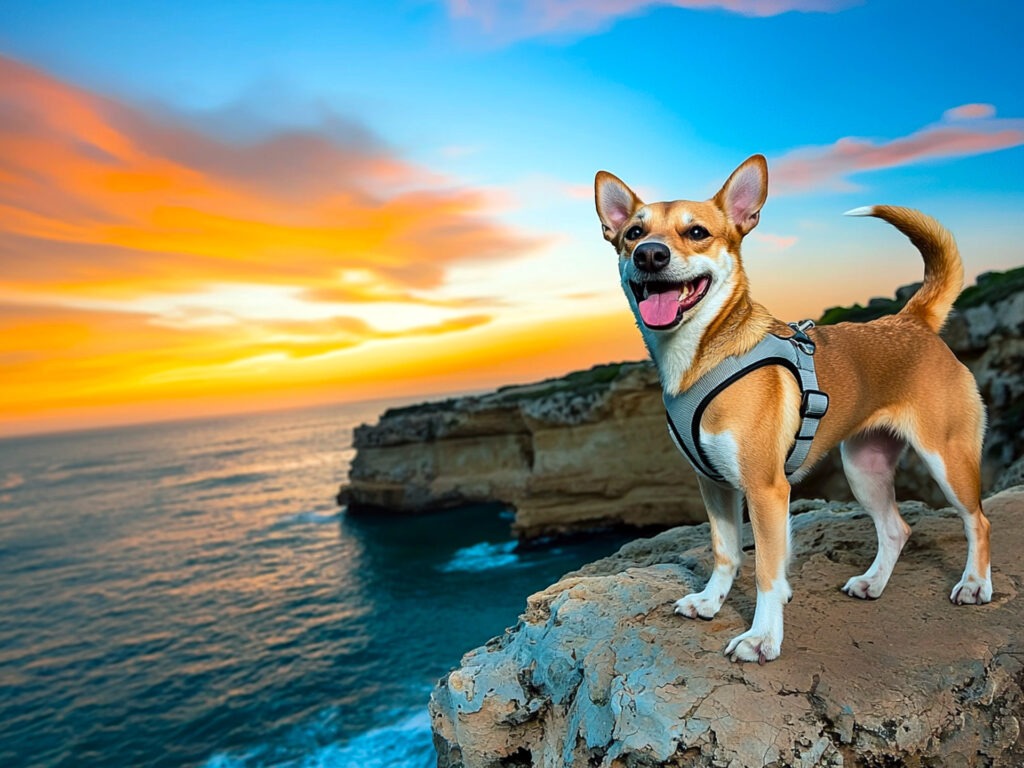
Planning a holiday with your pup? Whether you’re dreaming of sandy beaches, mountain hikes, bustling cities, or international adventures, the right destination can make all the difference. Below, we explore some of the world’s most dog‑friendly places—where your canine companion is not just allowed, but celebrated.
🏖️ Beach Getaways: Sand, Surf & Tail-Wagging Fun
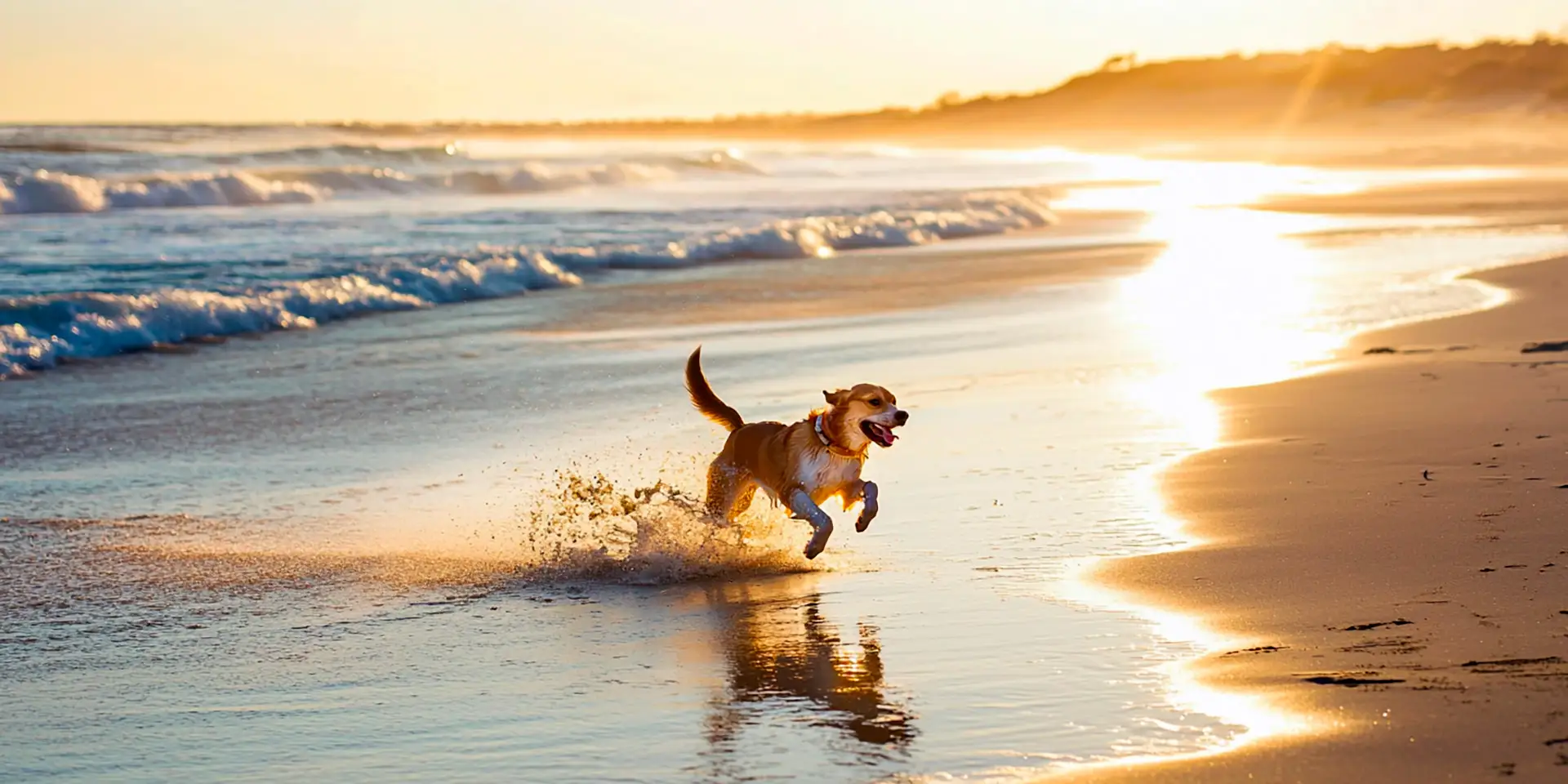
Nothing beats a coastal holiday where your dog can dig in the sand, splash in the waves, and snooze under a beach umbrella. Just be sure to check if dogs are allowed year-round or only during off-season, as local regulations can vary widely.
🐾 Top Picks: Dog-Friendly Beaches
| Destination | Why It Stands Out |
|---|---|
| Carmel, CA | Famous off-leash beach + luxury dog scene |
| Block Island, RI | Scenic, low-key, perfect for quiet walks |
| Bau Bau Beach, Italy | Agility park, lifeguards, Mediterranean charm |
| Wasaga Beach, ON | Long freshwater beach + trails nearby |
| Huntington Dog Beach, CA | Huge off-leash stretch + dog cafés |
Top dog‑friendly beaches and coastlines:
- Carmel-by-the-Sea, California (USA) – One of the most iconic off-leash beaches in the U.S. Known for its welcoming attitude toward dogs, Carmel features pet-friendly hotels, bakeries, and even a dog-only fountain.
- Block Island, Rhode Island (USA) – A low-key East Coast gem with dog-welcoming beaches, scenic walking trails, and laid-back seaside vibes.
- Wasaga Beach, Ontario (Canada) – Canada’s longest freshwater beach includes designated dog areas, pet-friendly cottages, and wooded trails just off the water.
- Bau Bau Beach, Liguria (Italy) – Italy’s most famous dog beach, featuring agility courses, showers, shaded spots, and even lifeguards trained for dog rescue.
- Huntington Dog Beach, California (USA) – A wide open stretch near LA where dogs can run leash-free and socialize, with easy access to pet-friendly cafés and parking.
- Cornwall, England (UK) – Dozens of beaches like Porthkidney and Holywell Bay allow dogs year-round. Paired with coastal trails and dog-welcoming pubs, it’s perfect for seaside adventure.
- Baker Beach, San Francisco (USA) – Leashed dogs are welcome on the northern section of this beach with stunning views of the Golden Gate Bridge.
- Noordwijk Beach, Netherlands – A coastal haven for dogs with long off-leash zones and pup-friendly restaurants along the boardwalk.
- Gold Coast, Queensland (Australia) – Home to some of Australia’s best dog beaches, like The Spit and Tallebudgera Dog Beach, with dedicated off-leash areas.
- Playa del Carmen, Mexico – While not all beaches are dog-friendly, there are a few gems where leashed dogs are welcome, and pet-friendly accommodations are growing fast.
For even more U.S. destination ideas, including hidden gems, coastal towns, and top-rated dog-friendly resorts—check out our full guide to the Best Dog-Friendly Vacations in the USA.
Pro tip: Always bring water, a towel, waste bags, and a long leash—especially in places where off-leash play is allowed only in designated zones.
For more regional suggestions, read our guide to dog‑friendly vacations east coast.
🏔️ Mountain Retreats & National Parks: Fresh Air & Scenic Trails

If your pup loves hiking, chasing scents, or just soaking up panoramic views, a mountain retreat might be the perfect choice. Many national parks and forest trails welcome dogs—just keep them leashed, bring plenty of water, and check for pet rules in protected areas.
🐾 Top Picks: Dog-Friendly Mountain Escapes
| Destination | Why It’s Great |
|---|---|
| Banff, Canada | Trails, gondolas, and pet-friendly hotels |
| Acadia, Maine | 100+ miles of leashed hiking trails |
| Lake District, UK | Pub stops + open fell walks |
| Sedona, Arizona | Red rocks and relaxed dog rules |
| Black Forest, Germany | Peaceful trails and pine-scented air |
Top mountain and park destinations for dogs:
- Banff & Lake Louise, Alberta (Canada) – Dogs are welcome on many of the trails and even gondola rides. Pet-friendly hotels abound, and the scenery is unforgettable.
- Acadia National Park, Maine (USA) – One of the most dog-friendly national parks in the U.S., with over 100 miles of trails where leashed dogs are allowed.
- Asheville, North Carolina (USA) – Nestled in the Blue Ridge Mountains, this artsy town offers pet-friendly hiking, river walks, and outdoor breweries where dogs are regulars.
- Sedona, Arizona (USA) – Red rock vistas, winding trails, and a welcoming vibe make this a desert escape for adventurous dogs.
- Lake District, England (UK) – Fell walks, lakeside strolls, and dog-welcoming pubs—plus many accommodations where your pup is treated like royalty.
- Black Forest, Germany – Vast pine forests, small alpine villages, and hundreds of miles of dog-friendly trails with stunning backdrops.
- Mont-Tremblant, Quebec (Canada) – A four-season resort town with pet-friendly cabins, mountain trails, and snowy adventures in winter.
- Chamonix, France – Many gondolas allow leashed dogs, and alpine meadows offer endless exploring. Great for active, well-trained pups.
- Harz Mountains, Germany – A peaceful and less-touristy area perfect for nature walks, with towns like Wernigerode offering dog-friendly lodging.
- Julian Alps, Slovenia – With scenic trails, waterfalls, and open countryside, it’s an emerging gem for European nature-loving dog owners.
Pro tip: Watch for altitude and weather changes. Bring a collapsible bowl, booties for rocky terrain, and always pack out your dog’s waste. Remember to carry bear bells, respect wildlife and keep dogs on leash where required.
🏙️ Urban Escapes: Culture, Cafés & City Parks

Not every holiday needs to be off-grid. Many vibrant cities around the world offer a mix of walkable neighborhoods, pet-friendly patios, off-leash parks, and even dog-centric events. Perfect for short weekend breaks or workcations with your pup.
🐾 Top Picks: Dog-Friendly Cities
| City | What Makes It Dog-Friendly |
|---|---|
| Portland, OR | 30+ dog parks, food trucks, and events |
| Vienna, Austria | Dogs on trams, cafés, and public parks |
| Vancouver, BC | Seawalls, beaches, and Stanley Park |
| Paris, France | Dog-friendly patios & strolls in Le Marais |
| San Diego, CA | Off-leash beaches + walkable neighborhoods |
Best cities for dog-friendly urban adventures:
- Portland, Oregon (USA) – Home to over 30 dog parks, dog-friendly food trucks, and breweries where your pup can join you for a pint.
- Vancouver, British Columbia (Canada) – Seawall strolls, off-leash beaches, and green spaces like Stanley Park make this city a canine paradise.
- Vienna, Austria – Dogs are welcome on public transit, in many cafés, and in over 1,000 public parks. It’s clean, well-organized, and ultra pet-friendly.
- Paris, France – Pups are welcome in many cafés, shops, and on-leash walks in gardens like the Parc des Buttes-Chaumont or Le Marais.
- Asheville, North Carolina (USA) – Laid-back charm with mountain views, breweries, and pet-centric events throughout the year.
- Copenhagen, Denmark – A rising dog-friendly capital with green spaces, waterfront promenades, and welcoming cafés.
- San Diego, California (USA) – Off-leash beaches, downtown dog boutiques, and walkable neighborhoods like Hillcrest and North Park.
- Amsterdam, Netherlands – Dogs are welcome on public transport, in many shops, and in urban green spaces like Vondelpark.
- Seattle, Washington (USA) – A dog-lover’s hub with hiking just outside the city, off-leash zones, and welcoming cafés.
- Tokyo, Japan – Surprisingly pet-friendly, with leash-friendly parks like Yoyogi and neighborhoods filled with dog cafés and grooming lounges.
Pro tip: Look for hotels that offer dog beds, bowls, and treats. And always check leash laws—urban areas vary from park to park.
Urban trips are ideal for short weekend breaks when you crave creature comforts and cultural attractions.
🌍 International Adventures: Going Beyond Borders
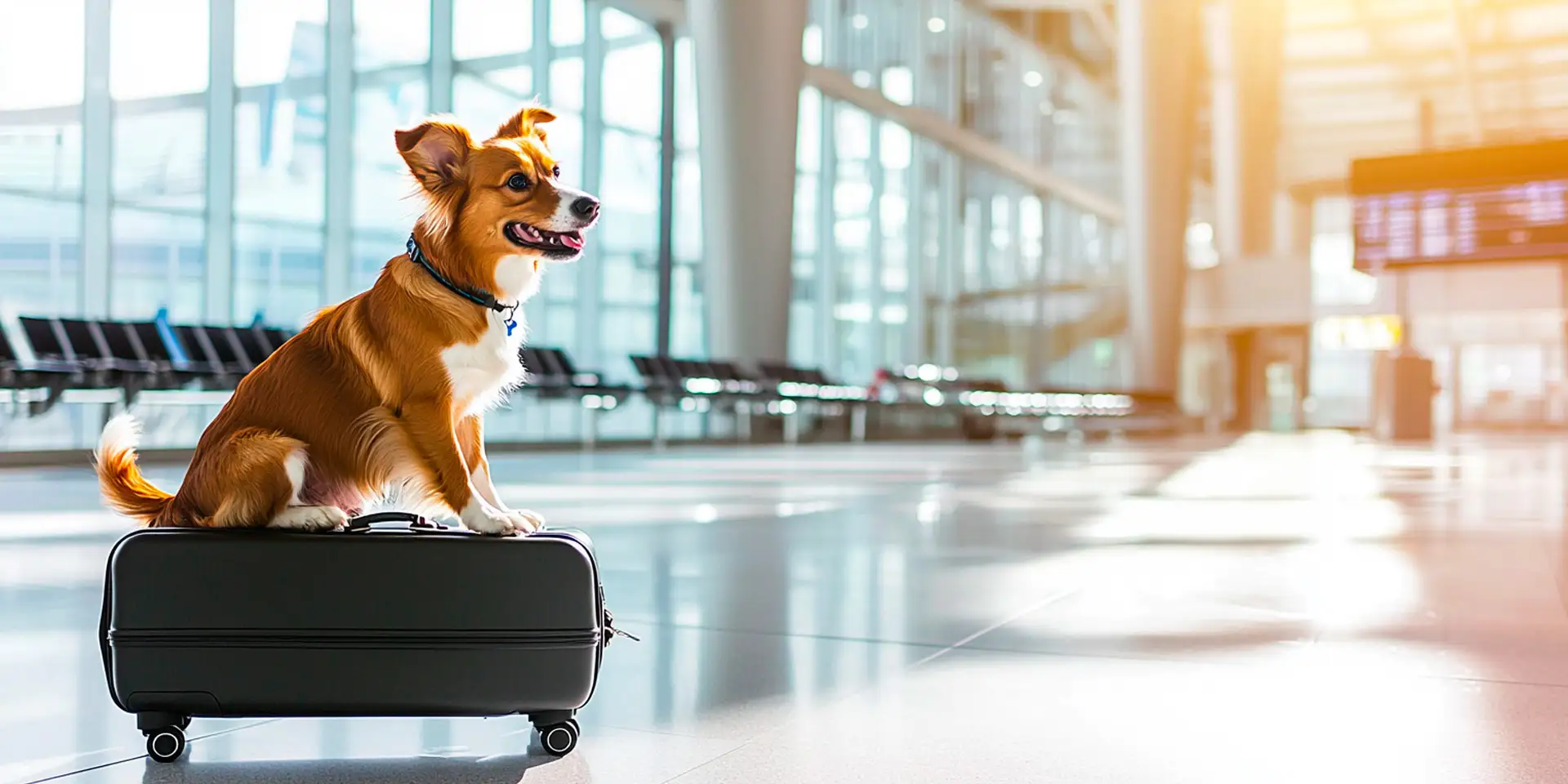
Looking to cross the pond—or an ocean—with your furry best friend? Many countries now offer streamlined pet travel options. Just be sure to understand import requirements, including vaccinations, microchipping, and possible quarantine periods.
🐾 Top Picks: International Dog-Friendly Destinations
| Country/City | Why It’s Pawesome |
|---|---|
| Zurich, Switzerland | Lakeside trails + transport access |
| Cornwall, UK | Year-round beaches + pub culture |
| Lake Bled, Slovenia | Scenic lakes + leash-friendly walks |
| Amsterdam, Netherlands | Trams, canals, dog cafés everywhere |
| Barcelona, Spain | Dog beaches + chill Mediterranean vibe |
Top international destinations for dog-friendly travel:
- Cornwall & Devon, England (UK) – Dozens of beaches allow dogs year-round, and nearly every pub welcomes four-legged guests.
- Zurich, Switzerland – Dogs are allowed on public transport, in stores, and along scenic lake promenades and alpine trails.
- Barcelona, Spain – Dog beaches, walkable neighborhoods, and a relaxed Mediterranean vibe.
- Tokyo, Japan – A well-regulated pet scene with immaculate parks, dog cafés, and growing hotel options for pet travelers.
- Reykjavik, Iceland – Though strict rules apply to imports, once cleared, you and your dog can explore volcanic landscapes and open air trails.
- Lake Bled, Slovenia – Leash-friendly boardwalks, lakeside paths, and mountain backdrops with fewer tourists.
- Gold Coast, Australia – Some of the best off-leash beaches in the southern hemisphere, plus a welcoming outdoor culture.
- Amsterdam, Netherlands – Dogs can board trams, trains, and boats with ease, and most restaurants will offer your pup a water bowl.
- Loire Valley, France – Explore castles and vineyards with your dog at your side—many outdoor tours and wine estates welcome pets.
- Girvan, Scotland – Named one of the UK’s most dog-friendly towns with open beaches, dog cafés, and shops displaying pawprint-friendly signs.
Pro tip: Always double-check entry requirements on official government websites well in advance—some countries require preparation 3–6 months ahead.
If you’re considering Europe, note that the EU pet passport simplifies travel between member states, but you must adhere to rabies vaccination and microchip requirements. The UK mandates a tapeworm treatment 24–120 hours before entry. In Asia, Japan and Singapore have strict quarantine rules, while Australia requires months of preparation. Weigh the complexity and cost against the experience—sometimes exploring within your own country offers just as much variety.
Finding the Perfect Accommodation
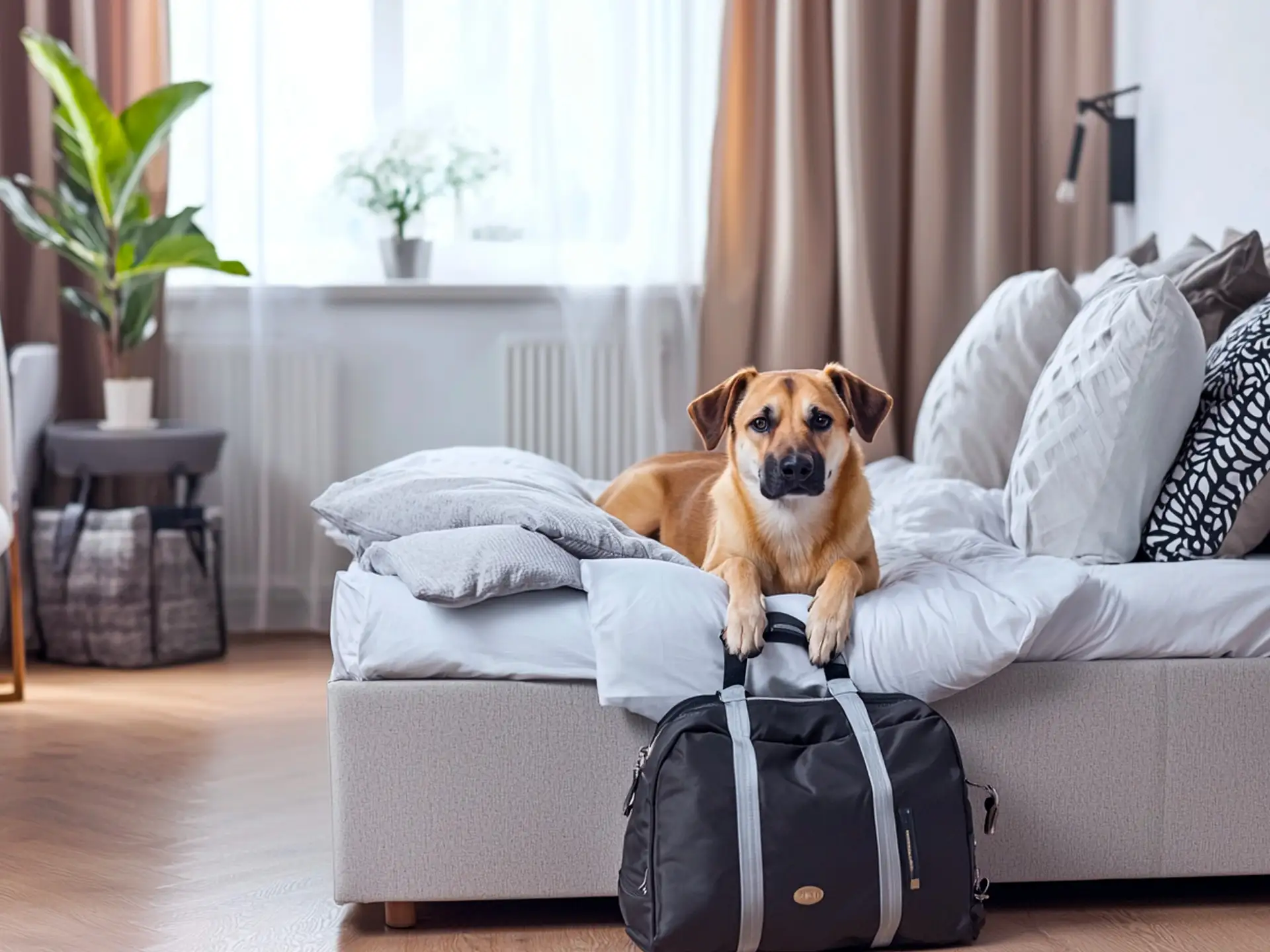
Hotels, lodges and resorts
More hotels than ever welcome dogs, but not all pet policies are created equal. When choosing a property:
- Check weight and breed restrictions. Some hotels allow only small dogs; others have no size limit.
- Ask about fees. Pet fees range from free to $75+ per night. Some charge per stay, others per dog.
- Look for amenities. On‑site dog parks, washing stations, welcome treats and pet‑sitting services add value.
- Consider location. Proximity to parks, trails or dog‑friendly attractions can make your stay smoother.
For high‑end pampering, look for resorts that offer dog‑spa treatments, room‑service menus and canine concierges.
Bed and breakfasts
B&Bs offer charm and personal touches. Many accept dogs but often limit the number of pets or require that dogs remain crated when unattended. When booking:
- Confirm whether pets can join you in common areas like the lounge or dining room.
- Ask about nearby off‑leash spaces for morning walks.
- Respect the homeowner’s rules—failure to do so makes it harder for other pet owners.
Vacation rentals and camping
Vacation rentals are ideal for longer stays or families needing more space. They often provide fenced yards and full kitchens. Read reviews for mentions of cleanliness and truly pet‑friendly policies. When camping or RVing, pick campgrounds with shade, fresh water and pet waste stations. Use a tether or portable pen to keep your dog secure around the campsite, and never leave food or trash out that could attract wildlife.
Booking tips and tricks
- Book directly with the property if possible; you can often negotiate fees or get clarification on policies.
- Join hotel loyalty programs—many waive pet fees for members.
- If you’re a frequent traveller, consider pet travel credit cards that offer rewards or cover pet fees.
Sample Itineraries & Weekend Getaway Ideas

The Classic Road‑Trip Weekend
- Friday evening: Drive to your destination. Upon arrival, take a walk to stretch your dog’s legs and dine at a pet‑friendly patio.
- Saturday morning: Enjoy breakfast and set off on a scenic hike or beach walk. Pack a picnic with dog‑friendly snacks. In the afternoon, visit a local farmers’ market or dog boutique.
- Saturday evening: Eat at a pet‑friendly restaurant. Some breweries host “yappy hour” events where dogs can socialise while owners sample local brews.
- Sunday morning: Explore a different attraction—perhaps a dog‑friendly museum, botanical garden or historical trail. Head home after a final play session at a park.
Adventure‑Focused Escape
- Day 1: Arrive at a mountain town with trail access. Take a moderate hike to acclimate.
- Day 2: Try a dog‑friendly activity such as paddleboarding, rafting or kayaking. In the afternoon, book an agility course or nosework class.
- Day 3: Drive a scenic byway, stopping at viewpoints and short trails. End the weekend at an off‑leash dog park for some free play.
Relaxation retreat
For a low‑key getaway:
- Choose a B&B or resort with private outdoor space.
- Schedule a dog‑friendly spa day or gentle massage session (yes, pet massage is a thing!).
- Spend your days strolling quaint towns, sampling bakery treats and reading on the porch while your dog naps.
- At night, enjoy a fire pit under the stars—just keep your dog on leash or in a portable pen.
Extended stay/workcation
If you’re taking your work on the road:
- Opt for pet‑friendly co‑working spaces or hotels with designated work areas.
- Maintain a structured routine: morning walks, work blocks, midday play breaks and evening explorations.
- Look for communities with dog clubs or meet‑up groups—both of you will appreciate social interaction.
Tips for a Stress‑Free Trip
- Prepare your dog gradually. Desensitise your dog to travel crates and harnesses at home. Reward calm behaviour.
- Keep documentation handy. Store vaccination records and vet contacts both digitally and on paper.
- Mind seasonal hazards. In summer, avoid hot pavement and carry paw wax or booties. In winter, wash your dog’s paws after walking on salted roads.
- Respect wildlife and other travellers. Keep dogs leashed in sensitive areas and prevent them from harassing animals or people.
- Stay flexible. Bad weather or closed trails may require a change of plans. Have indoor alternatives such as pet‑friendly wineries or museums.
FAQs
What countries are easiest to visit with a dog in 2025?
The best countries to visit with a dog in 2025 are France, Austria, and Switzerland. These countries offer relaxed pet travel rules and welcome dogs in hotels, restaurants, and on public transport like trains and buses.
How do I handle my dog’s anxiety on planes?
To calm your dog on a plane, use a familiar crate, include a worn T-shirt or blanket, and try natural calming spraysor vet-approved supplements. Avoid sedatives unless prescribed and always get your dog used to the crate before flying.
How do I plan a dog-friendly trip on a budget?
The cheapest way to travel with a dog is to drive to local destinations, stay in pet-friendly Airbnbs or campgrounds, and avoid hotels with high pet fees. Pack your own food, gear, and avoid flying to save costs.
What travel mistakes do dog owners often make?
Common dog travel mistakes include skipping crate training, forgetting ID tags, or assuming a hotel is pet-friendly without checking. Always confirm pet policies, pack essentials, and prepare your dog with short trips in advance.
Can I leave my dog alone in a hotel or rental?
Some hotels allow dogs to stay alone, but many don’t—even if crated. Always check the property’s pet policy. If needed, look for local doggy daycares or pet-sitting services, often listed in apps like DogPack.
Is pet travel insurance worth it for holidays?
Yes, pet travel insurance is worth it—especially for international trips. It can cover emergency vet visits, cancellations, or lost pet recovery. Some short-term policies start under $10 per trip and offer real peace of mind.
Do dogs get jet lag when traveling?
Dogs don’t get jet lag the same way humans do, but their routine can be disrupted. Stick to your dog’s usual feeding and walking times to help them adjust faster after crossing time zones or long-haul flights.
Conclusion
Travelling with your dog opens up a world of shared adventures and deeper bonds. As the travel industry embraces our canine companions, from dog‑centric airlines and spa treatments to eco‑friendly glamping retreats—the opportunities for memorable experiences are richer than ever. Successful dog‑friendly holidays start with careful planning: understand legal requirements, pack strategically, prioritise safety and research destinations and accommodation. Use the tips and resources in this guide to craft your ideal getaway, and explore our related posts on the best dog‑friendly vacations, resorts and road trips for even more inspiration.
Here’s to many wagging‑tailed adventures ahead. When you’re ready to plan the next leg of your journey, we’ll be here to help.

